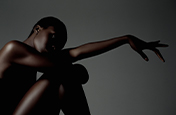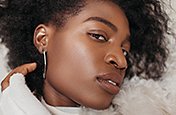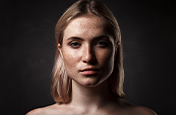Bring the past to life with vintage photography.
From old-school methods like monochrome and beyond, learn how to make the most of retro photo technology to capture great shots.

Photo by Jennifer Froula-Weber
What is vintage photography?
Vintage photography is a broad category. It’s not typified by any one technology or technique. It includes every kind of analog photography, from century-old cameras that could live in a museum to cameras that once used Kodachrome and even film cameras from the early 2000s. “Vintage photography is basically utilizing color, black-and-white, or color slide film in an analog camera,” says photographer Jennifer Froula-Weber.
Photography as a medium is nearly 200 years old, with the first photographs dating back to the early 19th century. During that time, it has evolved and undergone numerous changes, from daguerreotypes on silver plates to tintypes to gelatin glass plates to modern film, including styles from sepia to black-and-white photos to Polaroids.
Today, nearly all serious photographers use digital cameras, but working with retro technology can still be a fascinating experience for a photographer — one that still delivers stunning, provocative results. Tapping into the history of photography is a great way to liven up a fashion photography shoot or create fun wall art or family photos.
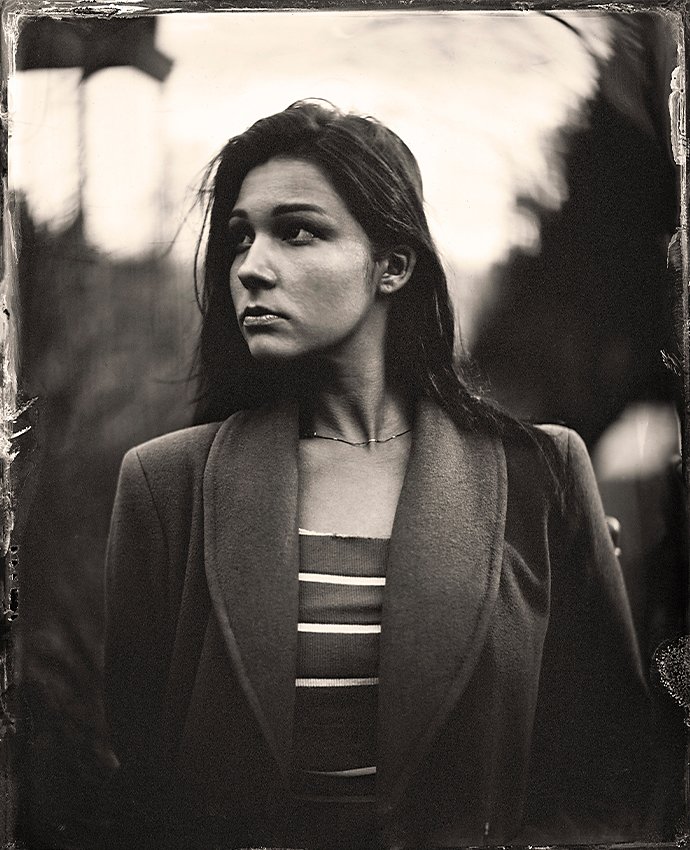
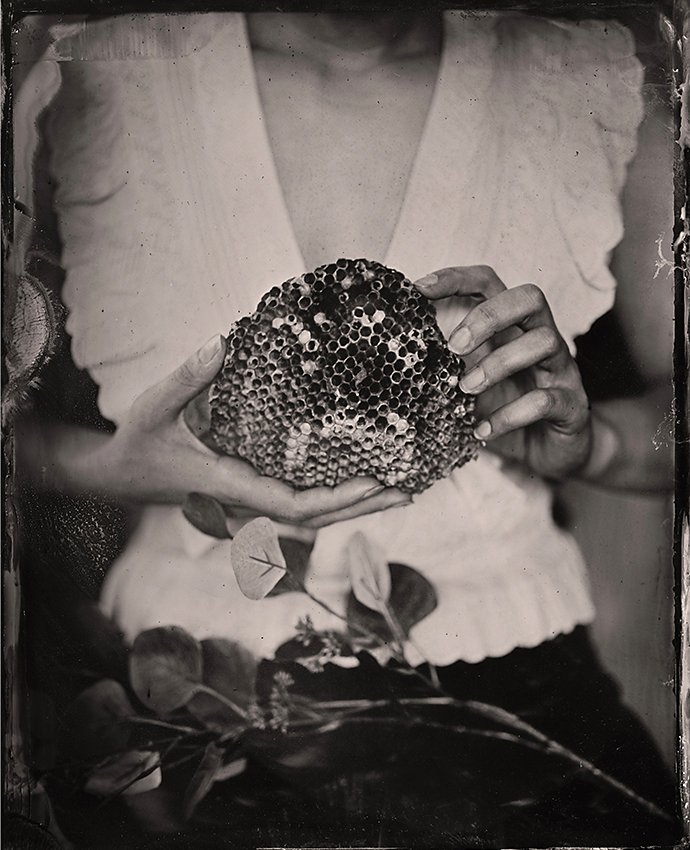
Photos by Jennifer Froula-Weber
First steps for vintage photography.
To truly capture a vintage feel in your photographs, try to use vintage equipment. A lot of old cameras are still fairly easy to find. “My camera was literally $13 from Goodwill,” says photographer Paige Mercer.
While cameras from the 19th century might be hard to locate, 35mm SLRs can be found at thrift stores, estate sales, or anywhere that older objects wait for someone to rediscover them. The camera is only part of what gives vintage images their particular feel, though. Photographers also need to consider the film.
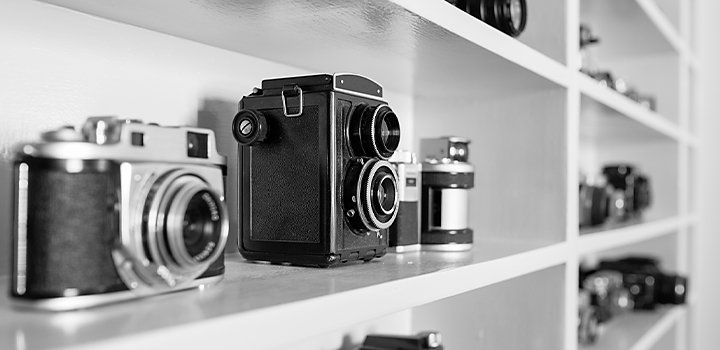
“If you want a really vintage look you should use old point-and-shoot box cameras predating the 1950s, or use expired film that is several or more decades old,” says Froula-Weber. “I’ve shot with film that’s 60–80 years old.” Shooting on film can be expensive, but when shots are limited, it can help a photographer be more deliberate about when they click the shutter — you’ll want to take more care setting up each shot. “Each click costs me money [with film]” says Mercer, “so it helps me be purposeful with my posing.”
You can develop your own film, but when you start with vintage photography, it’s beneficial to find a place that knows the technology and techniques. It’s good for a vintage photographer to maintain a solid relationship with a photo lab to help in their journey as they create old-looking images. “Definitely find a good film lab and keep good communication with them,” says Mercer. “Give them reference images to look after.”
How to run a vintage photoshoot.
Film photography is less instantaneous than digital photography. There’s a lot more time between making adjustments, taking shots, and seeing the results. So vintage photographers have to spend time internalizing what modern technology can do. “A lot of it is getting to know the camera you’ve chosen to work with,” says Froula-Weber. “You’re going to have a little bit of trial and error in the beginning.”
Because vintage photography encompasses a wide range of technology that begins in the 1800s and runs through the 20th century, it’s hard to generalize how cameras worked during those decades. But, in general, older photo technology tends to have a lower ISO than what today’s digital cameras are capable of.
“Because older film had a slower ISO, lenses, shutters, and aperture controls were designed for slower films,” says Froula-Weber. “That should be a key thing to keep in mind.” Because film was less sensitive to light in the past than it is now, photographers needed to compensate with a wider aperture, slower shutter speed, brighter lights, or some combination of all three. On a vintage photoshoot, bear in mind the particular light needs of your film and how that will affect the final product.
“Metering on a midtone is best practice,” Froula-Weber says, advice that is useful regardless of the vintage camera or film you’re using. “If you do not meter on a midtone you can blow out your image, but you could also underexpose it.” With some older cameras metering, or measuring light to gauge what aperture and shutter speed you should use, can mean using a separate, handheld light meter. Many cameras from the pre-digital era were not able to measure light on their own.
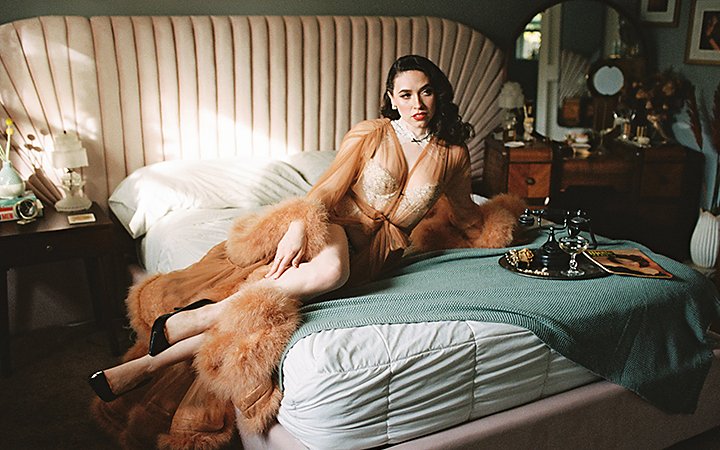
Photo by Paige Mercer
Vintage photoshoots can be a fun exercise in creative photography, especially if you’re trying to create an image that looks like it’s actually an antique photo. Dress models in retro fashions, pose your subjects like they’re from the time period, and find a setting that looks like it’s from another time. Ensure that mobile phones or other telltale tech devices aren’t visible, and locate a place you think could represent the 19th or 20th century.
“It’s important to think about what is timeless in your setting,” says Froula-Weber. “Things that can’t really be placed in one time period and have sustained through the years.”
A little bit of historical reference goes a long way. Froula-Weber advises to not overdo it with retro costumes, props, or other accessories. Dressing your models like they’re Abraham Lincoln or mid-century Playboy bunnies can be too specific a reference. “Try not to get too cheesy with it,” she says, “but play into it. If images are just whispering that they’re from a certain era, they’re way more impactful.”

Make vintage photographs digital.
After you take vintage photos, it’s time to share them. When you scan and edit the results of a vintage photoshoot, you might be tempted to make extensive image corrections or edits. Try to resist that urge. Blurred edges, light leaks, lens flares, motion lines, and grainy color are what make old photos so interesting. If you edit away too many of those issues it won’t look retro anymore.
“If I make any adjustments, they should be minor,” says Mercer. “Make it a tad more warm, or I’ll pull my blacks down. On occasion, I’ll bump up the exposure just a little bit, but really that’s probably about it.”
Cleaning up and making slight adjustments in Adobe Photoshop is part of the workflow for just about every image, but a light touch can yield big rewards with vintage photos.
Vintage photography is a great way to explore the history of the medium. Previous versions of photo technology can help you better understand and appreciate where today’s digital cameras came from and what you can do with a lens, a sensor, and light.
Contributors
Do more with Adobe Photoshop Lightroom.
Edit photos easily with Lightroom presets, Super Resolution, easily share photos from any device, and access your projects anywhere with cloud photo storage management.
You might also be interested in…
Find your truth in fine art photography.
Follow your passions and explore the conceptual layers of creating artistic photos.
Tips for effective hand poses and sitting poses.
Learn methods for effectively photographing human hands and seated subjects.
Capture elegant shots with glamour photography.
Learn to glamourize your subject with this unique style of portraiture.
Creating great portrait photography.
Take a step closer to perfect portraits with tips and advice from professional photographers.

